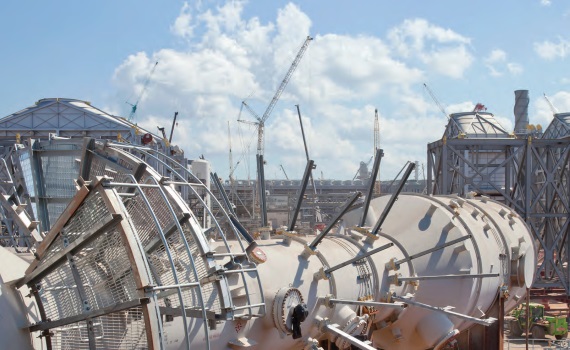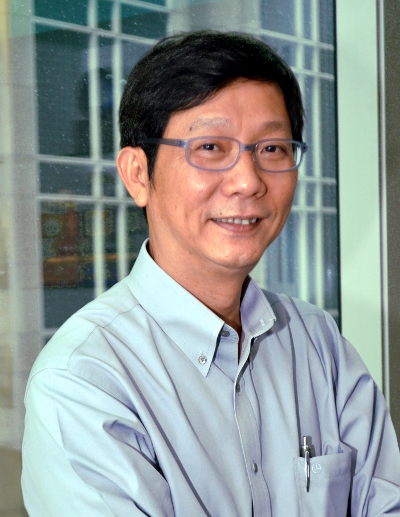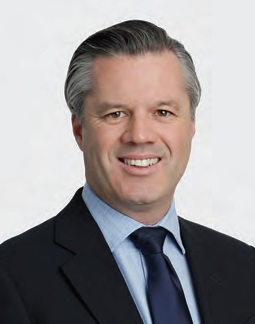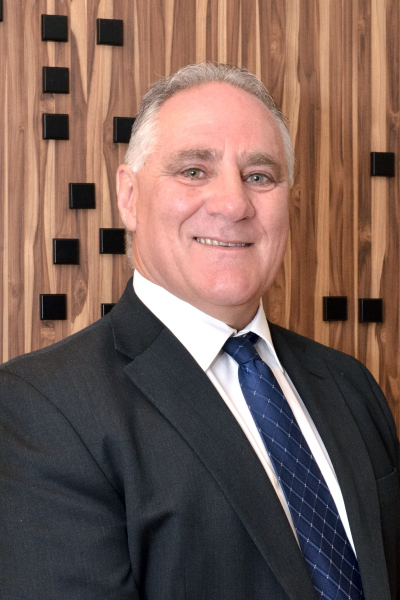 Recurring business: AusGroup unit AGC Meisei Joint Venture has a A$165m extension contract for painting, surface protection, fireproofing and insulation work for the INPEX-operated Ichthys LNG Onshore LNG Facilities Project near Darwin, Northern Territories. (Photo: annual report) Recurring business: AusGroup unit AGC Meisei Joint Venture has a A$165m extension contract for painting, surface protection, fireproofing and insulation work for the INPEX-operated Ichthys LNG Onshore LNG Facilities Project near Darwin, Northern Territories. (Photo: annual report)AusGroup's 3QFY2018 was its 6th consecutive quarter of profitability -- it posted net profit attributable to shareholders of A$3.5 million, up 8.0% year-on-year (yoy).
For more information, refer to its 3QFY2018 results briefing presentation slides here. |
|
Financial Highlights |
3QFY2018 |
yoy change |
|
Revenue |
136.3 |
26.8% |
|
Gross profit |
10.2 |
-35.0% |
|
Gross profit margin |
7.5% |
-7.2ppt |
|
Net profit attributable to shareholders |
3.5 |
8.0% |
|
– Shane Kimpton (NextInsight file photo) |
In April 2018, AusGroup announced that subsidiary AGC Industries secured a A$27 million contract from Western Australian resource development consultant MSP Engineering for structural, mechanical and piping installation work.
About 2,000 tons of structural steel and associated flooring and cladding, 70 tons of plate work and 450 pieces of mechanical equipment will be installed by AGC Industries for the Talison Lithium Chemical Grade Plant 2 expansion project at Greenbushes in Western Australia.
In May 2018, it announced that AGC Industries secured work for the 2018 turnaround contract at the Yara Pilbara liquid ammonia plant on the Burrup Peninsula near Karratha in Western Australia.
A "turnaround" is a scheduled event where an entire unit of a process plant is taken off stream for revamp or renewal work.
The Yara Pilbara contract is worth A$11.7 million and involves 15 work packs which include spool replacement, vessel replacement, refractory scope, remedial repair work, integrity improvement, and the implementation of a life extension programme.
Below is an excerpt of the questions raised at the Group's 3QFY2018 results briefing, and the replies provided by CEO Shane Kimpton, MD Eng Chiaw Koon, and CFO Christian Johnstone.

Q: What is preventing Port Melville from breaking even at the gross profit level?
Port Melville has been making losses for 4 years. The big challenge is commercializing the facility.
The first stage is to demonstrate its capability to safely receive fuel. With our current cash and capital constraints, we don't have A$10 million to invest in fuel.
We have bought a small amount of fuel -- 2 million liters. We intend to buy 2 million to 3 million liters per load.
The ship that comes from Singapore holds between 10,000 liters to 15,000 liters. There is a diversion cost to bring the ship into the port.
When we buy in smaller parcels, we don't get competitive rates. That puts pressure on our margins. Our capital constraint has a direct impact on our ability to get good gross margins for fuel sales.
 CFO Christian Johnstone
CFO Christian Johnstone
(annual report photo)
We need to get more customers and longer term contracts so that our fuel volumes can increase. That will enable us to buy bigger parcels of fuel which will lower our cost.
In the next quarter, you will see more revenue from Port Melville. We just need to continue to build up from that.
Q: What is the capacity of Port Melville?
We have three 10-million liter tanks, that is a storage capacity of 30 million liters.
We are using only one tank. We are currently constrained by the amount of fuel that we can afford to buy.
Q: How is the pre-bid working capital used when you tender for new business?
| Stock price | 5c |
| 52-week range | 3 - 6c |
| Market cap | S$72m |
| PE (ttm) | 4.5 x |
| Dividend yield | - |
| YTD return | -9.4% |
| Source: Bloomberg | |
The tender budget depends on the size of the prospective project because we need to recover this expense over the life of contracts that we secure.
The tender team is made up of estimators, bid managers, proposal coordinators, and engineers. When we work on a tender, there are manpower and other costs such as travel for making presentations. The presentations are done where the project site is and these are generally not near our headquarters in Perth.
And we have multiple tenders happening at the same time.
If we win a tender, there will be expenses for commercial, legal, recruitment, and other professional services as well as setting up the facilities at the work site before we commence work. For unusually large projects for which no contractor is willing to start the tender process, we can get cash advances from the client (if we give a bank guarantee).



 You have to deliver safely. That's the ticket to the game for all of us.
You have to deliver safely. That's the ticket to the game for all of us. 



